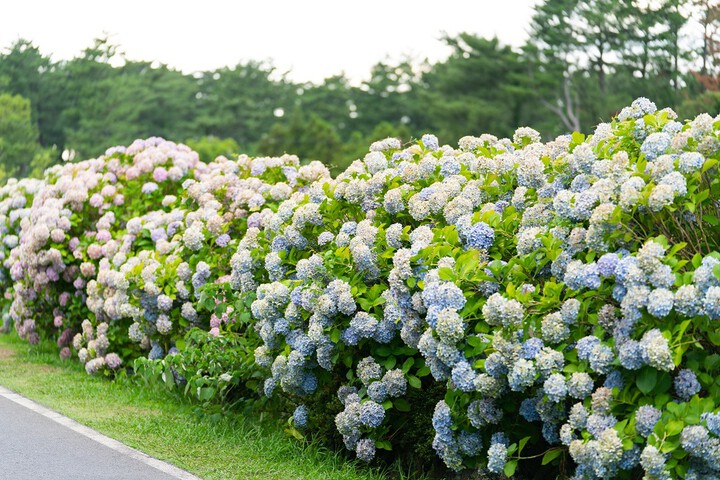A gardening expert shares her advice for removing spent flowers like a pro.
Deadheading your hydrangeas correctly—and at the appropriate time—only improves these plants down the road. Similar to pruning, deadheading is the practice of removing spent flowers from a plant to encourage better blooms later on. "Deadheading allows the energy produced by the plant to go into the leaves, stems, and roots (rather than forming seeds) for future growth," explains professional gardener Melinda Myers.

In addition to bolstering the future blooms, Myers says deadheading your hydrangeas has aesthetic benefits, too. "Removing faded flowers creates a neat and tidy appearance, which many gardeners prefer over the look of leaving dried flowers on the plant," she explains. However, Myers says knowing when and how to deadhead your hydrangeas will depend on what species it is. We asked her for advice about the best time and ways to remove finished flowers from different types of hydrangeas, and here's what she had to share.
Related: Mistakes You're Making with Your Hydrangeas
Have the right tools ready.
Before you can deadhead your hydrangeas correctly, Myers says you'll need to have the appropriate shears handy. "Use pruners, which have two sharp blades that cut like scissors. They handle stems up to half an inch in diameter, so they're best for deadheading," she explains. "They also allow you to extend your reach, which may be helpful when pruning larger panicle hydrangeas."
Get to know your variety.
Meyers says that the best time to prune your hydrangeas depends on the species. "Bigleaf hydrangeas, such as Endless Summer, should be deadheaded when the first set of flowers sprouts from last year's growth in the spring, as it eliminates the faded flowers before the next flush appears," she explains. "If you want a longer stem, you can make a deeper cut as long as it is done before July or August when the plant begins forming buds for next year's flowers." For smooth hydrangeas, she suggests removing the faded flowers as soon as they fade to green to ensure a second flush of smaller flowers in the fall.
Learn how to deadhead hydrangeas.
According to Myers, how you deadhead your hydrangeas is every bit as important as when you do it. "Locate the first set of full-sized leaves beneath the flower, and make your cut right above it," she says. "Essentially, you're removing the faded flowers to reveal a set of healthy leaves. This can be done right after flowering, or in late winter or early spring."
And when not to deadhead hydrangeas.
If you're looking for an effortless way to add interest to your winter garden, Myers suggests leaving the dried flowers on your hydrangeas. "Stop deadheading in the fall, when bigleaf hydrangeas produce their last flush of flowers, to enjoy the dried blooms throughout the winter," she says. "These can be removed to help produce healthy buds in the spring."
Take care before you snip.
Myers recommends waiting for the buds to begin to swell in spring, right before they leaf out, to make it easy to identify healthy buds to snip above. "Be careful not to remove large portions of the stems of bigleaf types," she adds. "By early August, they've usually set their buds for next year."